ASTANA — Efforts have been underway in the North Kazakhstan Region since 2019 to research and popularize historical and cultural heritage sites associated with the names of Kazakh batyrs (warriors), reports Kazinform news agency.

Memorial Karasai and Agyntai Batyrs. Photo credit: the Center for the Protection and Use of Historical and Cultural Heritage. Click to see the map in full size. The map is designed by The Astana Times.
The inclusion of nine batyr burial sites in the region’s sacred map and the creation of memorial complexes at these sites is an important step in preserving and popularizing the history of the Kazakh people.
Memorial Complex of Karasai and Agyntai batyrs
One of the most significant monuments is the memorial complex of Karasai and Agyntai batyrs, located in the Aiyrtau district, four kilometers southeast of the village of Karasai. The complex was erected in 1999, with the mausoleums standing at a height of 16 meters and the mosque at 12 meters. According to legend, in the 17th century, Karasai and Agyntai defended their land from foreign invaders, becoming legendary figures in the history of Kazakhstan. The inseparable batyrs participated in over 200 bloody battles over 48 years. Both are buried on the hill of Kulshynbai-Tobe.
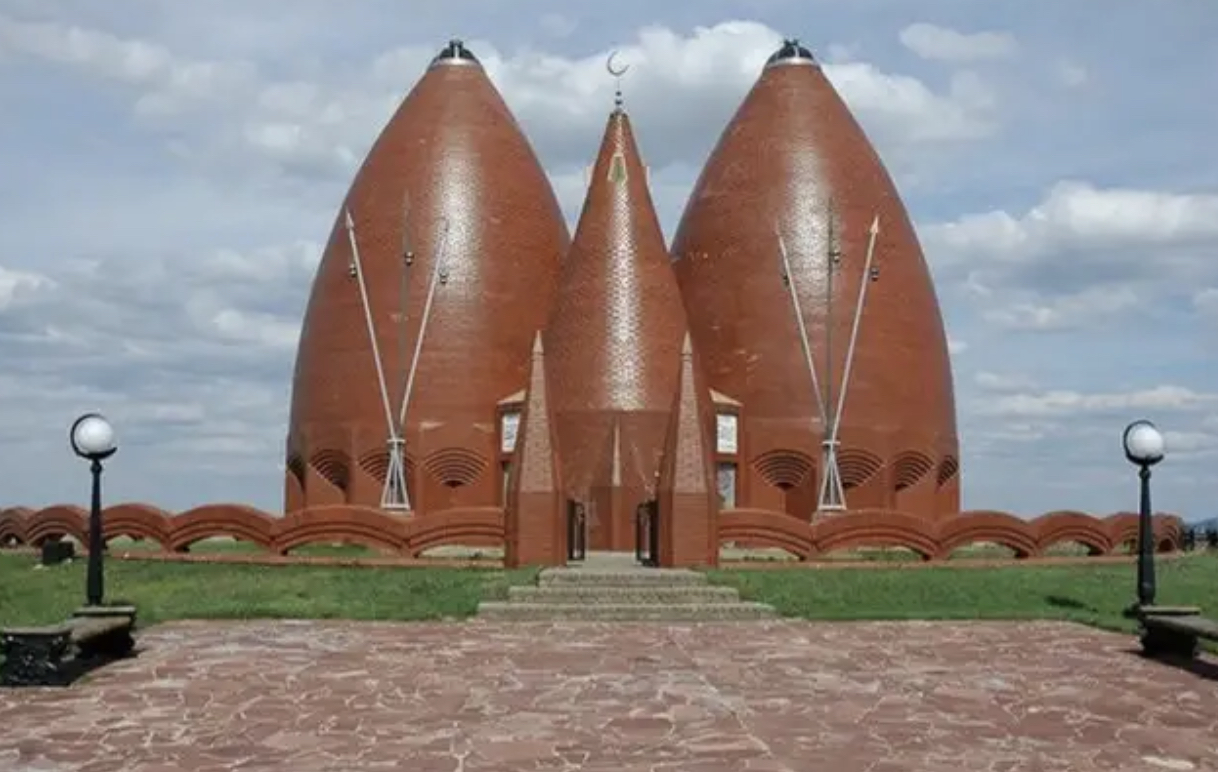
Memorial of Karasai and Agyntai batyrs. Photo credit: the Center for the Protection and Use of Historical and Cultural Heritage.
Their feats were so significant that the memorial complex has become a site of pilgrimage and excursions, attracting not only residents but also tourists from across Kazakhstan.
Burial Site of Kulsary batyr
The burial site of Kulsary batyr is located in the Yesil district, seven kilometers from the village of Bulak. Kulsary batyr was an influential elder and statesman of the 18th century, closely associated with the name of Abylai Khan. He was considered a saint who could predict events and heal the sick. Throughout his life, Kulsary served as a helper, advisor, and executor of Abylai Khan’s tasks and orders.
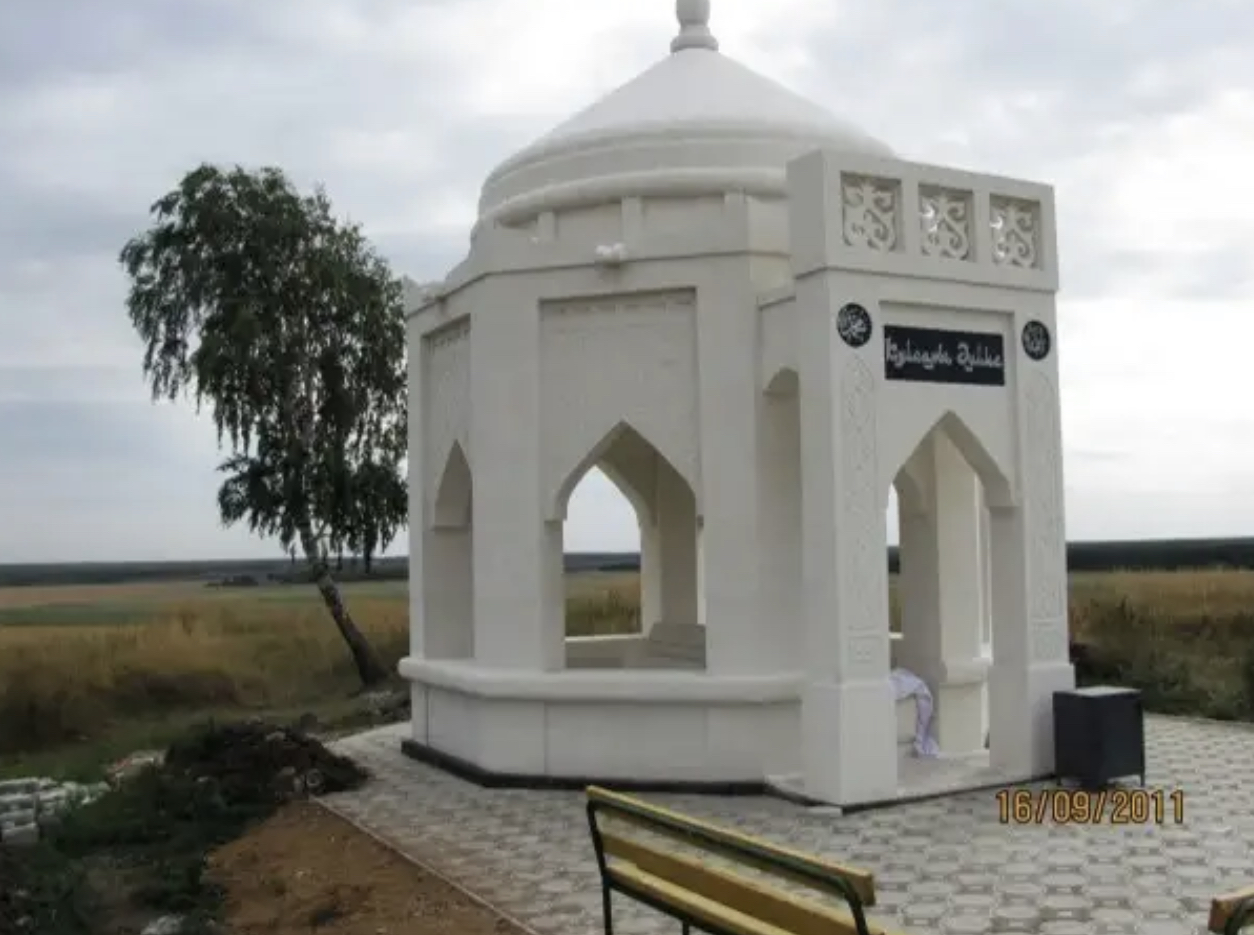
Burial of Kulsary batyr. Photo credit: the Center for the Protection and Use of Historical and Cultural Heritage.
His grave is considered a holy place, attracting visitors from different regions hoping for healing from illnesses.
Burial Site of Zhansugur batyr
Zhansugur batyr, the son of Koily Atygai Baubek, is buried near Lake Terencol, close to the village of Aralagash. His grave is also considered a sacred place. In his mature years, he became a bi (judge). His main merit lies in uniting disparate Kazakh tribes and ruling justly.
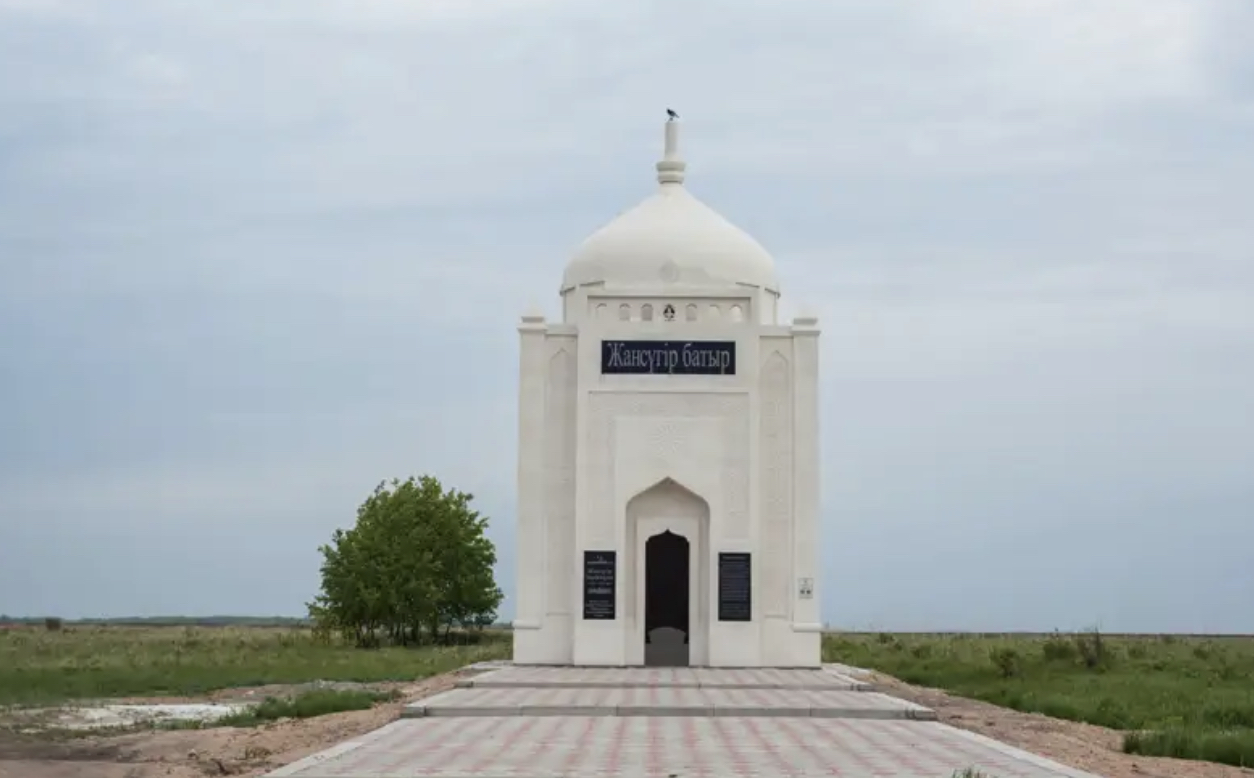
Burial Site of Zhansugur batyr. Photo credit: the Center for the Protection and Use of Historical and Cultural Heritage.
Burial site of Baytailak batyr
Baytailak batyr, a comrade of Yer Zhanibek batyr and a warrior of Abylai Khan is buried in the Akzhar district. His bravery and courage were recognized by many prominent batyrs and Abylai Khan. According to legend, sensing his death, Baytailak batyr bequeathed to be buried on a hill beyond the reach of water so he could observe from there to ensure no traces of enemies remained.
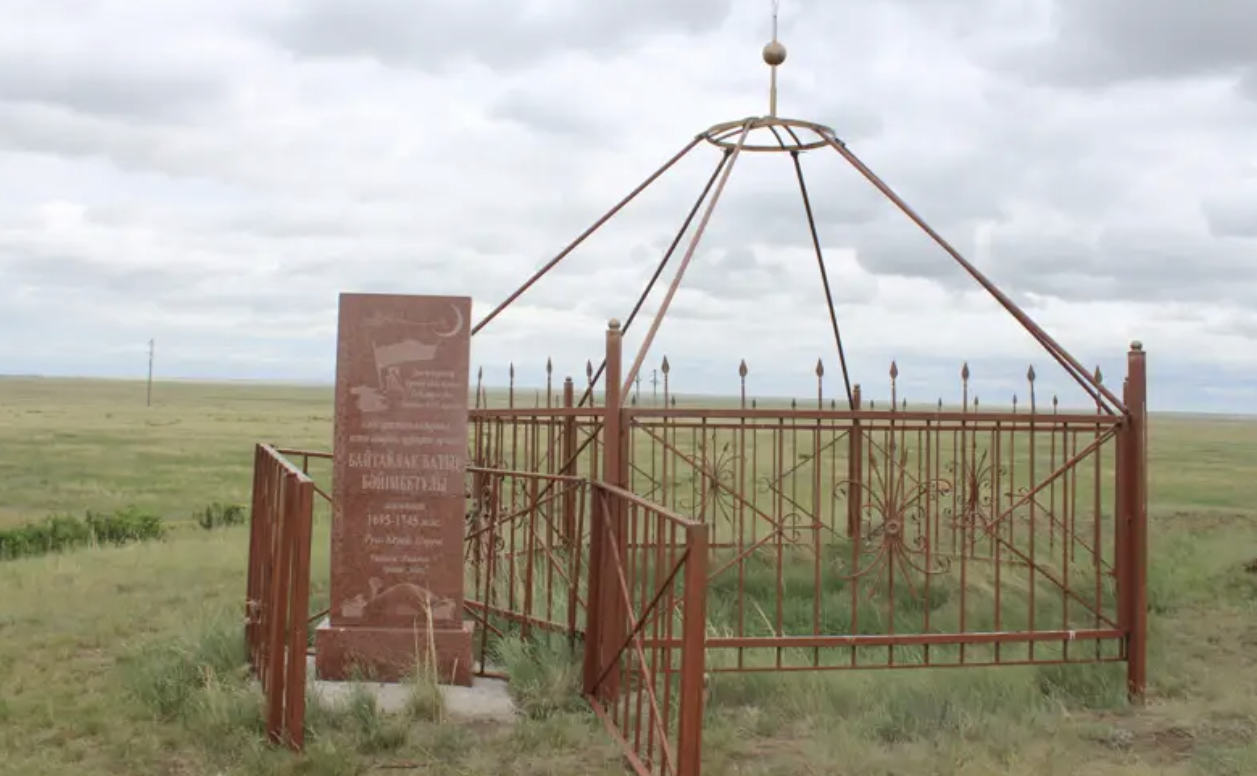
Burial Site of Baytailak Batyr. Photo credit: the Center for the Protection and Use of Historical and Cultural Heritage.
Memorial of Sary and Suir batyrs
The mausoleum of Sary and Suir batyrs is located in the Timiryazev district. Sary batyr and his relative Suir are known for their bravery and courage in battles against the Dzungars. In 2009, a commemorative plaque was installed at their burial site, and a memorial was opened in 2014.
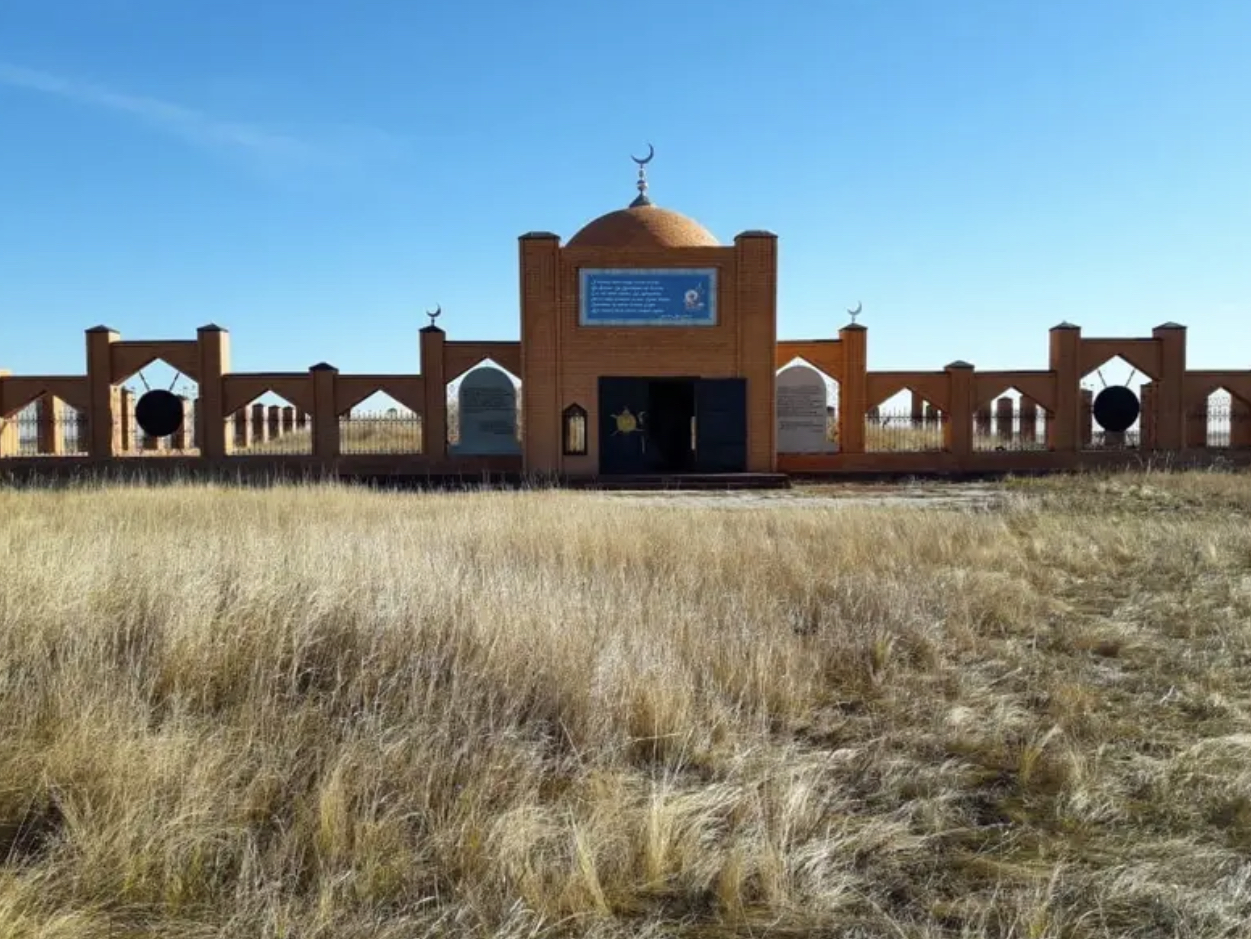
Memorial of Sary and Suir Batyrs. Photo credit: the Center for the Protection and Use of Historical and Cultural Heritage.
Sary was a brave warrior, tall and of large build. According to legends, his eyes filled with blood at the sight of enemies, and he would find himself amid battle among the Dzungar hordes. Suir Batyr was silent, with a stern appearance and thick eyebrows that covered his eyes. It is said that he pushed his eyebrows back with his dagger, and when angry, it was impossible to look him directly in the eyes.
Burial site of Kozhabergen Zhyrau
Kozhabergen Zhyrau, an akyn (poet), musician, batyr, and military leader, is buried in the Zhambyl district. A companion of Tauke Khan, he became the commander-in-chief of all the Khan’s troops at the age of 25. He is known for his historical poems and songs, including “Elim-ai,” which was long considered a folk song. A monument in his honor stands in Petropavl and a memorial was opened at his burial site in 2002.

Burial Site of Kozhabergen Zhyrau. Photo credit: the Center for the Protection and Use of Historical and Cultural Heritage.
Burial site of Suindik batyr
The burial site of Suindik batyr was discovered in 2017. Suindik batyr was one of the fighters against the Dzungar invasions, and his grave is also considered a sacred place.

Burial site of Suindik batyr. Photo credit: the Center for the Protection and Use of Historical and Cultural Heritage.
Burial of Mendeke batyr
Mendeke batyr, a commander and comrade of many famous batyrs, is buried on the border of the North Kazakhstan and Kostanai regions. He was a commander from the Kanzhygaly clan of the Middle Zhuz Argyn tribe. His feats were celebrated in the poems of Shal akyn.

Burial of Mendeke Batyr. Photo credit: The Center for the Protection and Use of Historical and Cultural Heritage.
Memorial of Batyr Bayan
Batyr Bayan, a hero of the 200-year war against Dzungaria, is buried in the Magzhan Zhumabayev district. This legendary hero of the Kazakh people’s struggle for independence and unity was born in the village of Aralagash in 1714. Batyr Bayan particularly distinguished himself in the eighty-day Shorgin battle at the foot of the Tarbagatai mountains and in the Akshau battles near Ayaguz. He died in 1741 during the liberation of the lands of present-day Mangystau.


